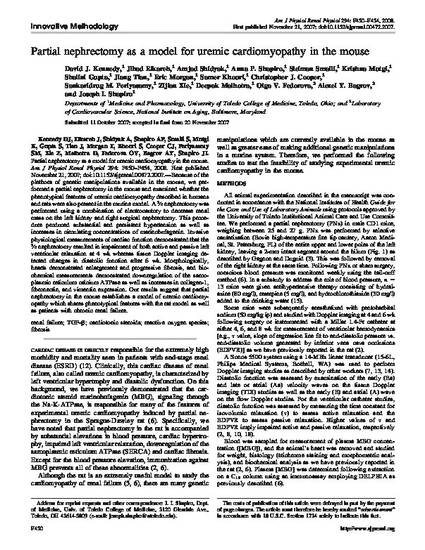
Because of the plethora of genetic manipulations available in the mouse, we performed a partial nephrectomy in the mouse and examined whether the phenotypical features of uremic cardiomyopathy described in humans and rats were also present in the murine model. A 5⁄6 nephrectomy was performed using a combination of electrocautory to decrease renal mass on the left kidney and right surgical nephrectomy. This procedure produced substantial and persistent hypertension as well as increases in circulating concentrations of marinobufagenin. Invasive physiological measurements of cardiac function demonstrated that the 5⁄6 nephrectomy resulted in impairment of both active and passive left ventricular relaxation at 4 wk whereas tissue Doppler imaging detected changes in diastolic function after 6 wk. Morphologically, hearts demonstrated enlargement and progressive fibrosis, and biochemical measurements demonstrated downregulation of the sarcoplasmic reticulum calcium ATPase as well as increases in collagen-1, fibronectin, and vimentin expression. Our results suggest that partial nephrectomy in the mouse establishes a model of uremic cardiomyopathy which shares phenotypical features with the rat model as well as patients with chronic renal failure.

The copy of record is available from the American Physiological Society at http://ajprenal.physiology.org/content/ajprenal/294/2/F450.full.pdf.